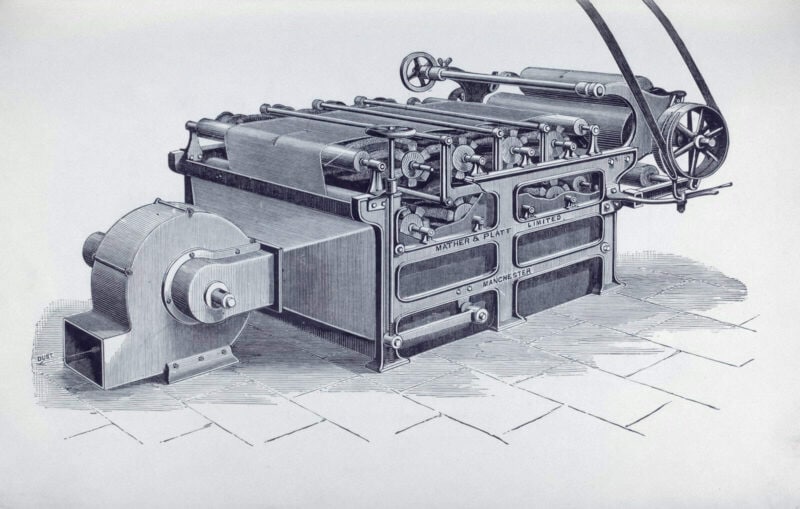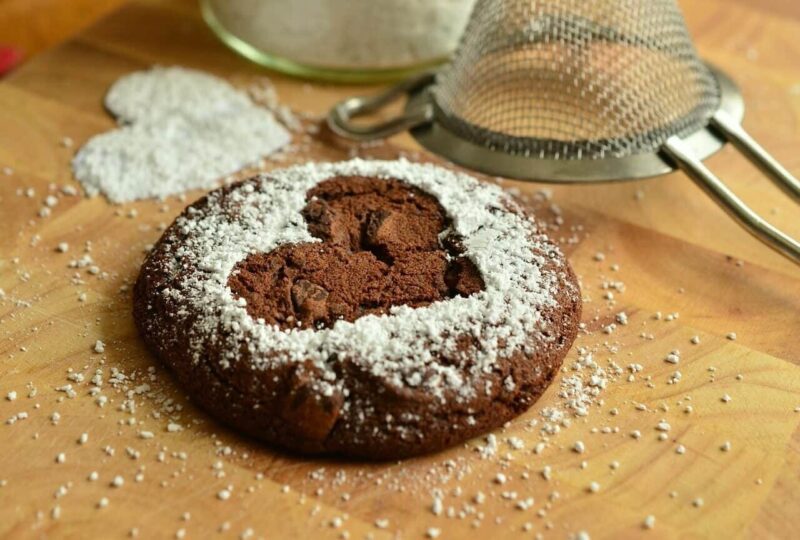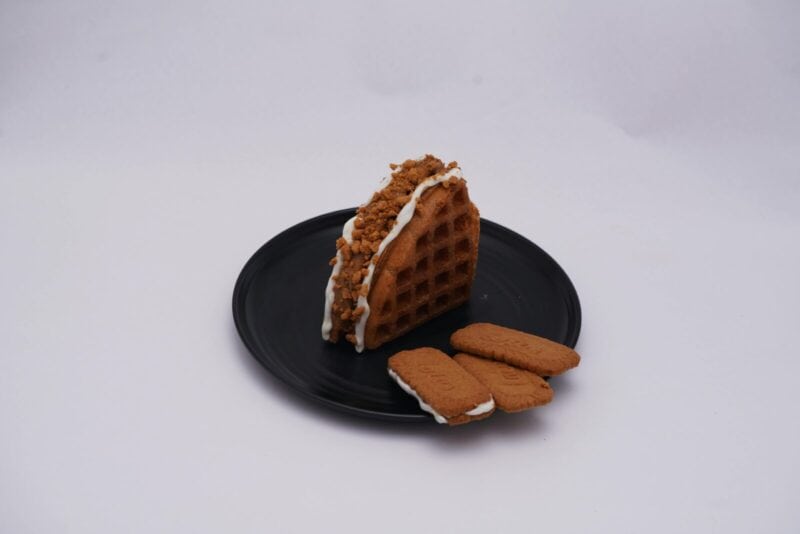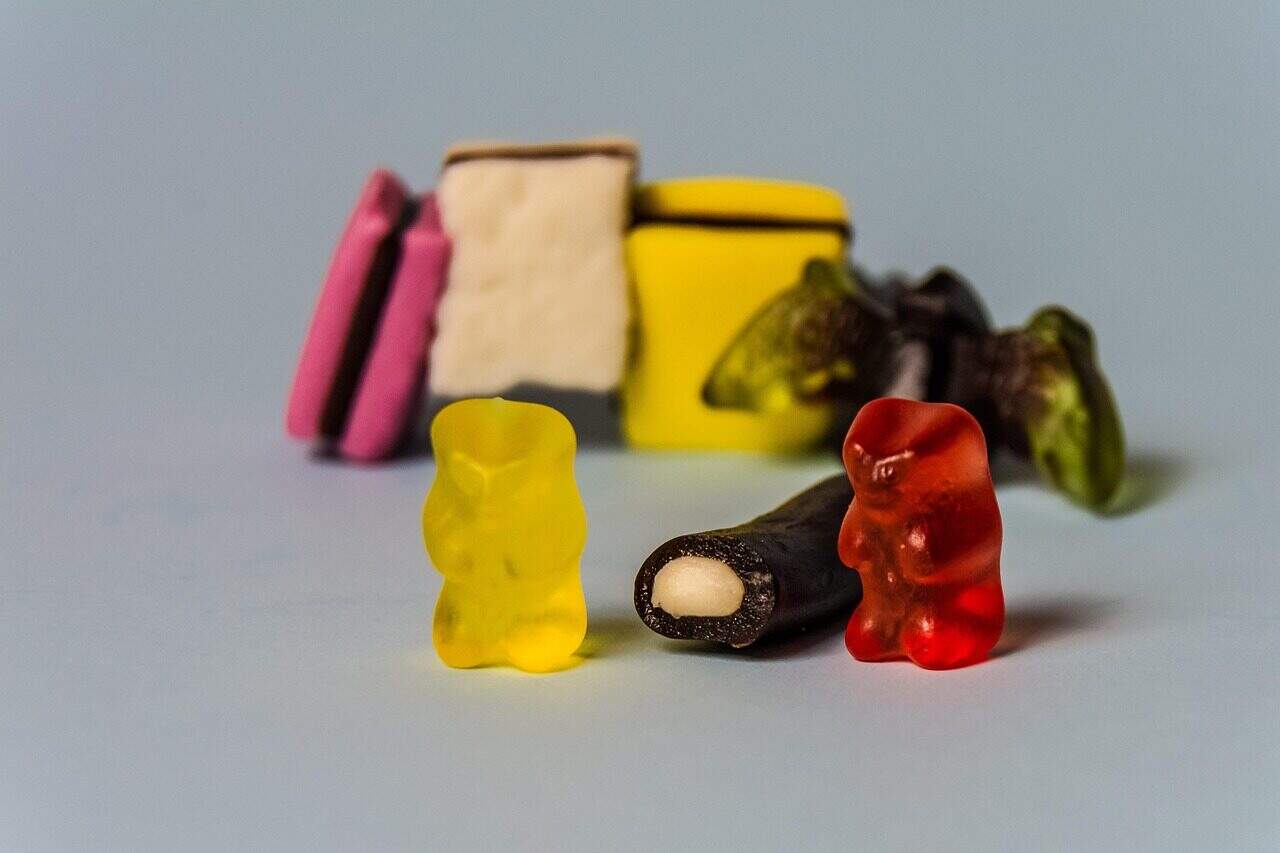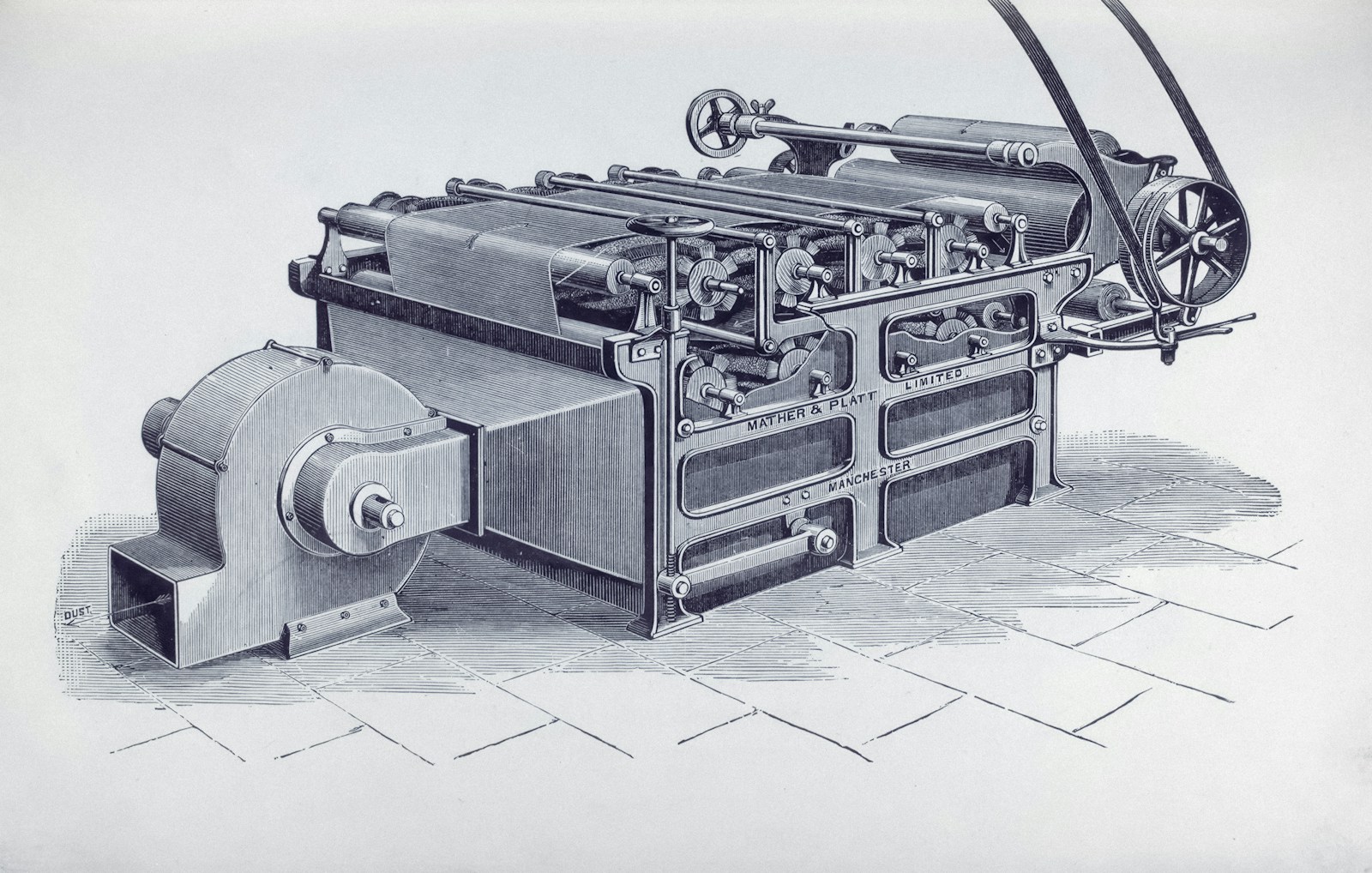Biscuit Machinery Production: A Professional Manufacturer’s Guide
Introduction
Are you ready to turn your favorite biscuit recipe from a small kitchen project into a big commercial success? The path from your kitchen to the market involves many important decisions, and choosing the right production equipment is the most crucial one. Growing your production isn’t just about making more biscuits; it’s about making them better, more consistently, and more efficiently. The machinery you choose will become the center of your business, determining your product’s quality, how much you can produce, and ultimately, how much profit you make.
This guide will be your partner on that journey. As experienced manufacturers of biscuit machinery, we will take you through every step: from understanding the basic types of machinery to designing your production line, making a smart investment, and preparing for the future of biscuit production. We want to make the process clear and simple, giving you the understanding and confidence you need to build a successful biscuit business from scratch.
Understanding Biscuit Types
It Starts with Product
Before you consider any piece of equipment, the first and most important decision is defining your product. The characteristics of your biscuit—its texture, fat and sugar content, shape, and size—are the main factors that will drive all your machinery decisions. A crisp, hard cracker needs a completely different process than a soft, chewy cookie. Clarifying your product range from the beginning prevents expensive mistakes and ensures that your investment perfectly matches your vision. This initial step is the foundation on which your entire production line will be built.
Major Biscuit Categories
To select the right biscuit machinery, you must first understand the main categories of biscuits and their basic processing needs. While there are countless variations, most commercial biscuits fall into one of these groups.
- Hard Biscuits & Crackers: These products, like Marie biscuits or saltine crackers, have a strong, elastic dough with relatively low fat and sugar content. The production process focuses on developing a gluten network. This requires sturdy machinery, including a sheeting line with multiple gauge rolls to gradually reduce the dough sheet thickness without damaging it. Layering is often needed for crackers to create their signature layered texture. Baking is typically done in a long, direct-gas fired (DGF) tunnel oven, which provides the intense, dry heat needed for a crisp finish and low moisture content.
- Soft Dough Biscuits & Cookies: This category includes products with high amounts of fat and sugar, such as chocolate chip cookies, shortbread, and deposited biscuits. The dough is short, meaning it has low gluten development, resulting in a tender, crumbly, or chewy texture. The key forming machines here are rotary molders for embossed biscuits or, more commonly, wire-cut machines and depositors that handle the sticky, less cohesive dough. Baking is often performed in an indirect convection or hybrid oven, which provides gentle, even heat to maintain some moisture and prevent excessive browning.
- Wafers (Flat and Hollow): Wafers are unique because they start from a liquid batter, not a dough. This requires a completely different front end of the production line, beginning with high-speed batter mixers and depositors. The core of a wafer line is the specialized wafer oven, which consists of numerous pairs of engraved baking plates (tongs) that clamp together to bake thin, precise sheets. After baking, these sheets pass through a cooling arch before being layered with cream on a creaming machine and cut into final products.
- Filled & Sandwich Biscuits: This is not a primary biscuit type but rather a value-added category. Any base biscuit, whether hard or soft, can be made into a sandwich biscuit. This process happens after baking and cooling. It requires dedicated post-baking machinery, such as a biscuit sandwiching machine. This machine uses stencils to apply a precise amount of cream filling onto one biscuit before capping it with another. Multiplying conveyors are often used to handle the high-speed output and align the biscuits perfectly.
A Production Line Anatomy
From Raw to Ready
While every biscuit production line is customized to the specific product and capacity requirements, the overall process follows a universal, step-by-step flow. Understanding this flow is essential for visualizing how individual machines connect to form a unified, efficient system. We can break down this journey from raw ingredients to packaged product into seven key stages. Each stage is handled by a specific piece of biscuit machinery designed for a precise function.
The Seven Key Stages
- Stage 1: Dough Mixing & Fermentation
The process begins here. The primary machine is the dough mixer, responsible for evenly combining flour, sugar, fat, water, and other ingredients into a consistent dough. For hard biscuits, a horizontal dough mixer is standard, as its powerful sigma-shaped arms can develop the strong gluten structure required. For soft doughs, a vertical or planetary mixer is often preferred for its gentler blending action that avoids over-developing the gluten. In some cases, such as for soda crackers, this stage also includes a period of fermentation in temperature-controlled containers.
- Stage 2: Dough Forming & Shaping
This is where the dough takes its final shape. The choice of machine is determined entirely by the dough type. For hard doughs, a sheeting line consisting of gauge rolls and a rotary cutter is used. The dough is passed through a series of rollers to achieve a precise thickness before the rotary cutter cuts out the biscuit shapes and pokes holes in the dough. For soft doughs, a rotary molder presses the dough into engravings on a roller, or a wire-cut machine pushes out a log of dough and a wire cuts off individual pieces. Depositors are used for very soft, almost batter-like cookie doughs.
- Stage 3: Baking
The tunnel oven is the heart of the production line and the most significant investment in terms of both cost and physical space. The type of oven directly impacts the final product’s color, texture, moisture, and shelf life.
- Direct Gas Fired (DGF) Ovens: Flames heat the baking chamber directly. Ideal for crackers and hard biscuits, providing high heat for rapid water removal and a crisp texture.
- Indirect Convection Ovens: A heat exchanger separates the combustion products from the baking chamber air, which is then circulated by fans. This provides a gentler, more even bake, perfect for soft biscuits, cookies, and cakes, preserving moisture and color.
- Hybrid Ovens: These combine different heating zones (e.g., DGF for the initial “oven spring” followed by convection for finishing) to offer the best of both worlds, providing maximum flexibility.
- Stage 4: Cooling
After exiting the oven at high temperatures, biscuits are fragile and must be cooled gradually. This is done on long, open-mesh cooling conveyors. The length is calculated to allow the biscuits to reach room temperature slowly. Rapid cooling can cause “checking”—the formation of fine cracks—which compromises the biscuit’s structural integrity and shelf life. Proper cooling ensures the biscuit is stable enough for stacking and packaging.
- Stage 5: Post-Baking Processing (Optional)
This stage adds value and variety. Machines here include oil sprayers, which add a shine and flavor to crackers immediately after baking. Sugar or salt toppers can also be used. For sandwich biscuits, this is where the biscuit sandwiching machine is located, applying cream and creating the final product.
- Stage 6: Stacking & Feeding
Before packaging, the stream of biscuits coming off the cooling conveyor must be organized. This is the job of the stacking machine. Star wheel or “penny” stackers receive the biscuits and arrange them into neat, counted lanes or stacks, ready to be fed directly into the packaging machine. This automates what would otherwise be a highly labor-intensive process.
- Stage 7: Packaging
The final stage is to wrap the biscuits to preserve freshness, protect them during transport, and present them attractively to the consumer. The most common machine is a horizontal flow wrapper, which creates “pile packs” or “slug packs.” These wrapped packs may then be fed into a cartoning machine, which builds, fills, and seals cardboard boxes for retail sale.
Choosing Right Machinery
Beyond The Price Tag
Selecting the right biscuit machinery is a strategic decision that goes far beyond simply comparing price lists. The “best” machine is not the cheapest or the most advanced; it is the one that provides the “best fit” for your specific product, capacity, budget, and facility. A smart investment considers the total cost of ownership, including operational efficiency, maintenance, and future growth potential. To navigate this complex decision, we guide our clients through a structured framework, ensuring all critical factors are considered.
The Decision Matrix
To make an informed choice, you need to ask the right questions. We have developed a decision-making matrix to help prospective buyers analyze their needs systematically. This tool transforms a challenging choice into a series of manageable questions, leading to a logical conclusion.
| Criteria | Questions to Ask Yourself | Impact on Machinery Choice | Manufacturer’s Tip |
| Production Capacity | What is your target output (kg/hour)? Do you anticipate future growth? | Menentukan ukuran, kecepatan, dan tingkat otomatisasi lini. Kapasitas yang lebih tinggi membutuhkan oven dan peralatan pembentuk yang lebih luas dan lebih cepat. | Selalu rencanakan kapasitas 15-20% lebih besar dari target awal Anda. Penyangga ini mengakomodasi pertumbuhan tanpa memerlukan investasi ulang yang terlalu cepat. |
| Keserbagunaan Produk | Apakah Anda akan memproduksi satu jenis biskuit atau beberapa jenis pada lini yang sama? | Lini multiguna membutuhkan mesin yang lebih serbaguna seperti cetakan kombo atau oven hibrida, yang dapat meningkatkan investasi awal. | Jika memiliki anggaran terbatas, fokuslah pada lini produk utama, tetapi pastikan tata letaknya memungkinkan penambahan unit pembentukan atau pasca-pemanggangan yang berbeda di masa mendatang. |
| Anggaran & ROI | Berapa total anggaran belanja modal Anda? Berapa jangka waktu pengembalian investasi yang Anda harapkan? | Mempengaruhi pilihan antara jalur semi-otomatis vs. jalur otomatis penuh dan peralatan baru vs. peralatan bekas. Jalur yang sepenuhnya otomatis memiliki biaya awal yang lebih tinggi tetapi biaya tenaga kerja jangka panjang yang lebih rendah. | Pertimbangkan semua biaya operasional-energi, tenaga kerja, pemeliharaan, dan bahan habis pakai-bukan hanya harga pembelian awal, saat menghitung ROI Anda. |
| Ruang Pabrik | Berapa luas lantai, panjang, dan tinggi fasilitas Anda yang tersedia? | Tata letak fisik mesin harus sesuai dengan ruang yang tersedia. Oven terowongan, khususnya, membutuhkan panjang yang signifikan, dan konveyor pendingin dapat dibuat bertingkat untuk menghemat ruang lantai. | Produsen profesional akan menyediakan gambar tata letak khusus (CAD) untuk memastikan kesesuaian yang sempurna dan alur kerja yang efisien di dalam fasilitas Anda. |
| Sumber Energi | Sumber energi apa yang tersedia dan hemat biaya di lokasi Anda (Gas Alam, LPG, Listrik)? | Hal ini secara langsung berdampak pada pilihan oven dan secara signifikan dapat mempengaruhi biaya operasional jangka panjang. Ketersediaan dan harga gas sangat bervariasi di setiap wilayah. | Oven berbahan bakar gas langsung sering kali lebih hemat energi untuk biskuit keras, sementara oven listrik mungkin menawarkan kontrol yang lebih tepat untuk makanan khusus. Analisis biaya utilitas lokal Anda dengan cermat. |
| Keterampilan Tenaga Kerja | Bagaimana tingkat keterampilan dan ketersediaan tenaga kerja lokal Anda? | Jalur yang sepenuhnya otomatis membutuhkan lebih sedikit operator tetapi lebih banyak teknisi yang sangat terampil untuk pemeliharaan dan pemecahan masalah. Jalur semi-otomatis mungkin memerlukan lebih banyak tenaga kerja manual tetapi dengan pelatihan teknis yang lebih sedikit. | Antarmuka mesin modern (HMI) menjadi lebih intuitif, tetapi pelatihan komprehensif dari produsen selama komisioning sangat penting untuk keberhasilan. |
Aplikasi Industri yang Beragam
Satu Industri, Banyak Produk
Istilah "lini biskuit" adalah istilah yang sangat sederhana. Pada kenyataannya, ini adalah sistem modular yang dapat dikonfigurasi dengan berbagai cara untuk menghasilkan beragam produk. Dengan menggabungkan berbagai mesin pembentuk, jenis oven, dan unit pasca-pemanggangan yang berbeda, produsen dapat menyesuaikan lini dengan ceruk pasar tertentu atau membuat sistem serbaguna yang mampu menghasilkan beberapa keluarga produk. Modularitas ini adalah kunci inovasi dan daya tanggap pasar dalam industri pemanggangan. Sebagai produsen, kami telah mengonfigurasi lini untuk segala hal, mulai dari biskuit sederhana hingga makanan lezat yang rumit, berlapis-lapis, dan berisi krim.
Contoh Pengaturan Produk
Untuk mengilustrasikan keserbagunaan ini, tabel di bawah ini menunjukkan bagaimana konfigurasi mesin yang berbeda digunakan untuk membuat beberapa produk biskuit dan biskuit yang paling populer di dunia. Hal ini menunjukkan bagaimana prinsip-prinsip yang telah dibahas sebelumnya diterjemahkan ke dalam pengaturan pabrik di dunia nyata.
| Produk Akhir | Karakteristik Adonan Utama | Mesin Pembentuk Esensial | Unit Pemanggangan/Pasca Pemanggangan yang Penting |
| Biskuit Marie / Biskuit Keras | Adonan gluten yang kaku, rendah lemak, dan dikembangkan | Sheeter, Gulungan Pengukur, Pemotong Putar | Oven Terowongan Panjang (Berbahan Bakar Gas Langsung) |
| Kue Cokelat Chip | Adonan yang lembut, tinggi lemak, tinggi gula, dan pendek | Mesin Potong Kawat atau Depositor | Konveksi Tidak Langsung atau Oven Hibrida |
| Kerupuk Soda | Adonan berlapis, difermentasi, dan berlapis-lapis | Laminator, Garis Terpal, Pemotong Putar | Oven Berbahan Bakar Gas Langsung, Penyemprot Minyak Pasca Panggang |
| Krim Sandwich (misalnya, Oreo) | Biskuit dasar apa pun (biasanya keras, timbul) | (Sesuai dengan biskuit dasar, misalnya, Rotary Molder) | Mesin Sandwich Biskuit dengan pompa krim |
| Keripik Wafer | Adonan cair dengan viskositas rendah | Pengaduk & Penyimpan Adonan Wafer | Wafer Plate Oven, Cream Spreader, Cutting Unit |
Installation and Operation
Partnership Beyond Delivery
Our relationship with a client does not end when the machinery is shipped. In fact, a crucial phase is just beginning. The successful installation, commissioning, and long-term operation of a lini produksi biskuit depend on a close partnership between the user and the manufacturer. We view ourselves as your technical partners, committed to ensuring your investment performs optimally from day one and for decades to come. This post-purchase support is what separates a mere equipment supplier from a true solution provider.
A Smooth Installation
A successful launch starts long before the machines arrive.
The Pre-Installation Checklist: We work with clients to ensure total site readiness. This involves verifying that the factory floor is perfectly level—we often see clients underestimate how a slight incline can cause tracking issues with a 30-meter oven belt. It also includes confirming that all utility connections—electrical power, gas lines, and compressed air—are in place and meet the specified capacities.
On-Site Commissioning & Training: Our technicians do more than just assemble the line. During commissioning, they systematically test every component, fine-tuning the system with your actual ingredients to achieve the desired product. Crucially, this period is also for intensive training. We train your operators on the day-to-day running of the line and your maintenance staff on safety protocols, troubleshooting, and preventive care. A common mistake is not dedicating key personnel to this training, which can lead to preventable downtime later.
The Secret to Longevity
A biscuit machinery line is a significant asset designed for a long service life. The secret to maximizing that lifespan and ensuring consistent performance is moving from a reactive (“fix it when it breaks”) to a proactive maintenance culture. Preventive maintenance is a schedule of regular checks, cleaning, lubrication, and parts replacement that prevents major failures before they happen. Our most successful clients rigorously follow a maintenance schedule.
| Frequency | Component | Maintenance Task | Purpose |
| Daily | Conveyor Belts | Check tracking & tension. Clean product debris from the belt and rollers. | Prevents belt damage, product jams, and hygiene issues. |
| Weekly | Dough Mixer | Inspect mixer shaft seals and bearings. Lubricate drive chains and gears. | Prevents ingredient leakage, contamination, and mechanical failure. |
| Monthly | Oven Burners/Elements | Visually inspect for blockages or damage. Check ignition systems and flame patterns. | Ensures even baking, optimal energy efficiency, and operational safety. |
| Quarterly | Gearboxes & Motors | Check oil levels and quality in gearboxes. Listen for unusual noise or vibration. | Prevents catastrophic failure of the main drive systems. |
| Annually | All Electrical Panels | Check all terminal connections for tightness. Clean dust with compressed air. Test all safety circuits (e.g., emergency stops). | Critical for fire prevention and ensuring operator safety. |
The Future of Production
Baking for Tomorrow
The biscuit industry is not static. Consumer tastes are evolving, and so are the technologies used to meet those demands. When investing in a production line today, it is wise to consider the trends that will shape the industry tomorrow. A forward-thinking manufacturer designs machinery that is not only efficient today but also adaptable for the future. We are constantly innovating to incorporate these trends into our equipment.
- Automation & Industry 4.0: The integration of advanced PLC controls and intuitive HMI screens is now standard. The future is about networking these systems. This allows for remote monitoring of the production line from a central office or even a mobile device, advanced recipe management for quick and error-free product changeovers, and data logging for performance analysis and predictive maintenance, reducing labor dependency and human error.
- Sustainability & Energy Efficiency: With rising energy costs and environmental concerns, efficiency is paramount. Modern biscuit machinery focuses heavily on this. New oven designs feature superior insulation, heat recovery systems that use exhaust heat to preheat incoming air, and more efficient burners. Modern hybrid ovens can reduce gas consumption by up to 20% compared to older designs, offering a significant reduction in long-term operational costs.
- Enhanced Food Safety & Hygiene: Food safety standards are continually tightening. Future-proof machinery is designed for hygiene. This means using stainless steel construction, eliminating hard-to-reach areas where dough or debris can accumulate, and designing components for easy disassembly and cleaning. Some systems are now incorporating CIP (Clean-in-Place) technology, further automating the sanitation process.
- Flexibility & Customization: The market demands variety. Consumers want new flavors, healthier options, and different pack sizes. This requires machinery that is flexible. The future lies in modular designs that allow for quicker changeovers. A line might be designed to easily swap a rotary molder for a wire-cut machine, or to bypass a creaming station, enabling a producer to switch from a hard biscuit to a cookie to a sandwich cream with minimal downtime.
Your Success Blueprint
Conclusion
From defining the unique characteristics of your biscuit to understanding the intricate stages of production, choosing the right biscuit machinery is a journey of informed decisions. We’ve explored the complete anatomy of a production line, from the initial dough mixer to the final packaging wrapper. We have provided a strategic framework to guide your selection, emphasizing that factors like capacity, versatility, and factory space are just as crucial as the initial price. By examining real-world industry applications and planning for the entire operational lifecycle with a proactive maintenance plan, you are setting your operation up for sustained success.
Remember, investing in a biscuit production line is more than a capital expense; it is the foundation of your brand’s quality, efficiency, and future growth. It is the engine that will turn your recipe into a household name. Choose a manufacturer who acts as a partner, providing expertise not just on the equipment but on the process, and you will have the ultimate recipe for commercial success in this dynamic industry.
Frequently Asked Questions
Q1: What is the average lifespan of a complete biscuit machinery production line?
J: Dengan pemeliharaan preventif yang tepat seperti yang diuraikan di atas, kualitas tinggi lini produksi dari produsen terkemuka dapat memiliki masa pakai 20-30 tahun atau lebih. Komponen utama seperti oven terowongan, mixer, dan kerangka baja utama dibuat untuk umur yang sangat panjang. Suku cadang yang aus seperti sabuk konveyor, bantalan, dan segel akan memerlukan penggantian berkala sebagai bagian dari jadwal pemeliharaan normal, tetapi aset inti adalah investasi jangka panjang.
T2: Dapatkah saya memulai dengan jalur semi-otomatis dan meningkatkannya ke otomatis sepenuhnya nanti?
J: Tentu saja. Ini adalah strategi yang umum dan sangat direkomendasikan untuk usaha baru atau bisnis yang memasuki pasar baru. Produsen yang baik dapat merancang lini modular dari awal. Misalnya, Anda dapat memulai dengan pengumpanan adonan secara manual dan pengemasan wadah secara manual. Seiring dengan meningkatnya permintaan dan pendapatan produksi Anda, Anda dapat menambahkan sistem pengumpanan adonan otomatis, penumpuk otomatis, dan pengemas wadah robotik ke lini yang ada, meningkatkan tingkat otomatisasi seiring dengan pertumbuhan bisnis Anda.
T3: Berapa biaya lini produksi biskuit?
J: Ini adalah pertanyaan yang paling umum, tetapi tidak memiliki jawaban tunggal. Biaya mesin biskuit bervariasi secara dramatis berdasarkan beberapa faktor utama: kapasitas (dari 100 kg/jam hingga lebih dari 5.000 kg/jam), tingkat otomatisasi, jenis biskuit (lini wafer sangat berbeda dengan lini kerupuk), dan asal serta kualitas produsen. Lini dasar yang sangat kecil mungkin mulai dari puluhan ribu dolar, sementara sistem berkapasitas besar dan sepenuhnya otomatis dari pabrikan Eropa papan atas dapat menelan biaya beberapa juta. Sangat penting untuk mendapatkan penawaran khusus berdasarkan kebutuhan spesifik Anda.
Tautan Referensi:
BEMA - Produsen Peralatan Roti & Sekutu https://www.bema.org/
American Society of Baking (ASB) https://asbe.org/
Asosiasi Pembuat Roti Amerika (ABA) https://americanbakers.org/
Membaca Sistem Roti - Peralatan Biskuit Industri https://www.readingbakery.com/
Pameran Industri Kue Internasional (International Baking Industry Exposition/IBIE) https://www.bakingexpo.com/
Majalah Bisnis Kue https://www.bakingbusiness.com/
Kue Komersial - Berita Industri https://commercialbaking.com/
AIB International - Ilmu Pengetahuan & Teknologi Kue https://www.aibinternational.com/
Majalah Makanan Ringan & Grosir Roti https://www.snackandbakery.com/
Toko Roti Ritel Amerika (RBA) https://www.retailbakersofamerica.org/

